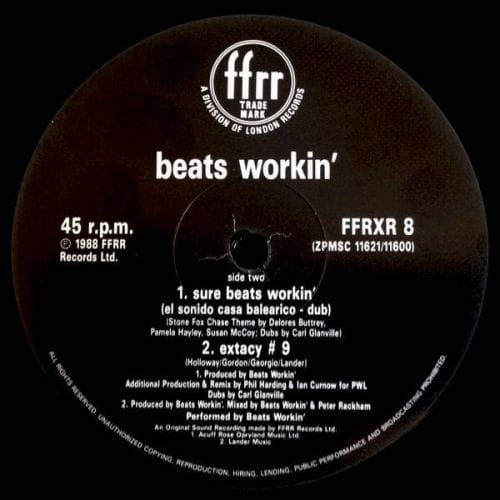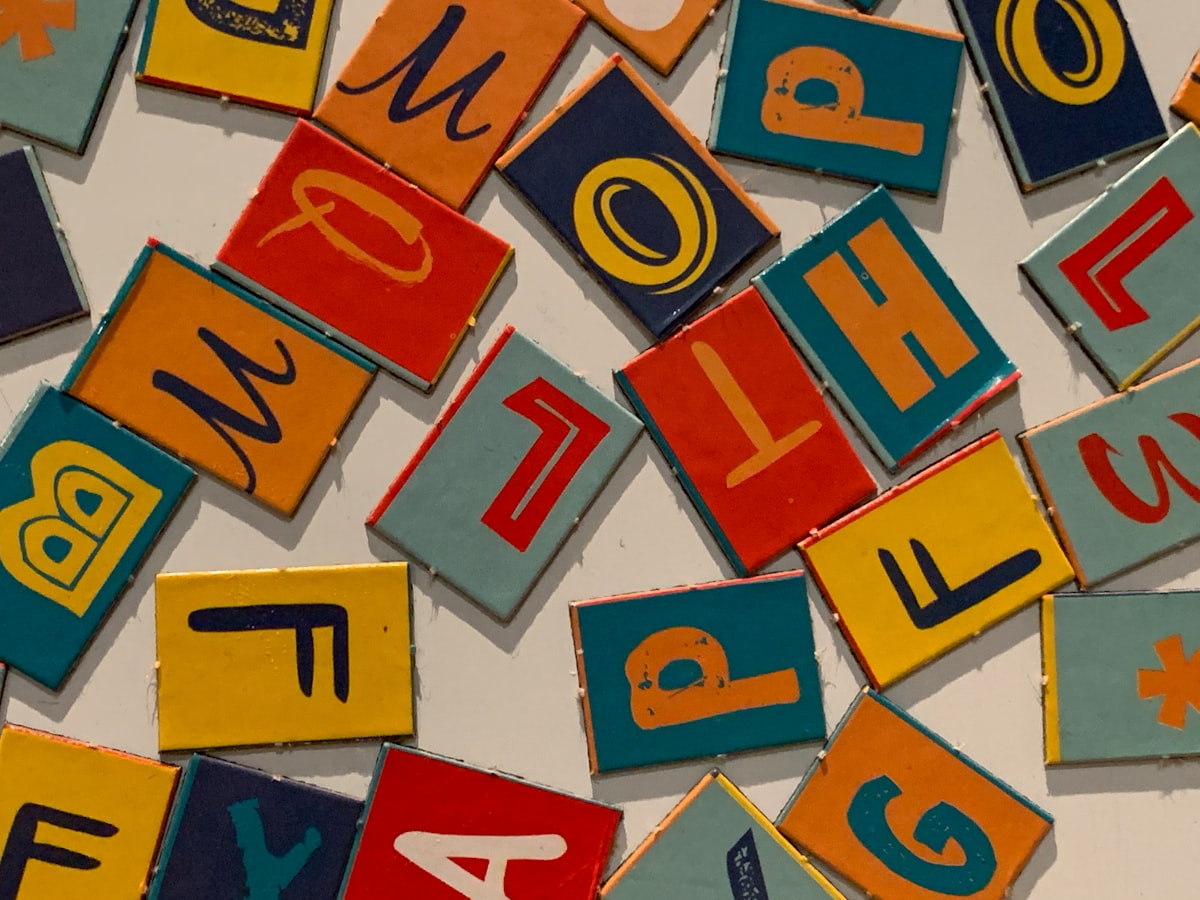Beats (Co-)Workin' | Adventures... 66
Solving the puzzle of how we work (together)

Hello. This is the Adventures… newsletter: a trip into finding your inner groove, creating work that sustains, and making more sense of the world. It’s put together by me, Howard. Not a subscriber yet? Join now
Greetings from seat 27B. I’m on my way back from SXSW, following a wonderful few days in Mexico City (and a less wonderful 24 hours marooned at the airport due to a flight cancellation - but hey, life.)
Why CDMX? As well as seeking out tacos, art, and sunshine, I was there to co-work. And when I say ‘co-work’, I don’t mean sitting in a coffee shop with headphones on. I mean actually producing things - with a real person, in-person.
The progress we made in just a few days was extraordinary. It got me thinking: why was it so successful? And how do we work now, anyway?
A year ago the media was full of stories about ‘The New Normal’ and ‘Return to Office’. Now, not so much. It seems to have disappeared from view.
Did I miss the memo? Was it all sorted out?
Maybe for some. But I’m sensing a gnawing dissatisfaction, an ominous rumble. It’s affecting freelancers, teams, and companies alike. And left unchecked, it creates ugly side effects.
Let’s take a look at why - plus three antidotes we can apply.
A load of cobblers
A recent New York Times study on company/employee work arrangments concluded:
“these battles have largely come to an end, and workplaces have reached a new hybrid-work status quo. Roughly one-tenth of workers are cobbling together a combination of work in the office and from home, and a similar portion are working entirely remotely.”
Ok - 20% of the overall working population is pretty low, and WFH is definitely a privilege for most. Still, in the US alone there are 15m+ people working from home for a good chunk of their time. That’s a lot of time and energy.
But almost 1500 days on from that rapid adoption of WFH, are we really still in the ‘cobbling together’ phase? It appears so.
While WFH offers plenty of upsides - less commuting drudgery, space for household chores, more work-life balance - it might not be all it’s cracked up to be.
Slumping
My pal Tom and I chatted about this last week. We agreed that at home the ‘peaks’ aren’t as high - and the ‘troughs’ tend to last longer.
The high-voltage jolt of a cool idea, opportunity or breakthrough doesn’t feel so bright when you’re on your own. Neither does the delight of a turn of phrase, meme, or other connection point. The energising, electrifying, and illuminating bits of the work all run at lower lumens.
WFH can also accelerate troughs into slumps. Slumps are riddled with procrastination, loss of momentum, phoning it in, or a lack of direction. They can last a day, a week, a month… a year. Longer slumps pull us into the orbit of what Adam Grant called languishing (written for the pandemic, but still relevant today, because guess what, the pandemic never really… ended.)
Here’s the thing about the slump: alone, it’s hideous. Yet with other people, you tend to be able to pull yourself out much more easily.
But if 5 days a week in an office isn’t the answer (hint: it’s not), how to solve this puzzle of peaks and troughs? How do we bridge the gaps?
A question of design

One of my ongoing riffs is the idea of ‘lowercase skills’: being Capital case in some areas, and lowercase in others.
A great example of this is Design. Many of us would feel very uncomfortable identifying as a capital D ‘Designer’: can’t draw; can’t create pretty slide decks; aren’t able to make our apartments look like those snazzy Instagram ads.
But design is “a concept of or proposal for an object, a process, or a system”. It’s not reserved for the creative magicians. It’s everywhere. And you too can be a designer. Including in your work setup. There are meetings, environments, tools, times of day. When you think about it, there are dozens of components that benefit from design.
Becoming designers of our working lives can be transformative.
Yet many of us just plod on with whatever we patched together (or was thrust upon us). This is a lingering pandemic hangover, and it’s time for a restorative bacon sandwich and a cup of tea.
To avoid blank canvas paralysis, here are 3 ideas to redesign our work. One is primarily for individuals, one for teams, and the third for workspace operators. But just like design that works - they’re open to all.
1) For Individuals: The Two-Way Jam Session
This one is ridiculously simple. It also costs nothing, and makes both you and someone else feel good. I’ve done it with a few people now - most recently last week in CDMX. Here’s how it works.
Each of us brought a single prompt or challenge relating to our work. We then spent 45 minutes collaborating on each one, with a goal of outlining some form of solution.
There’s no way one to do it, but as a guide you want to: i) keep a strict time constraint; ii) focus on a single project, and iii) aim for one clear output.
The process forces you to ask clarifying questions, be vulnerable, and challenge your biases. All useful, transferable skills. This combination - along with our complementary domain expertise, cups of coffee and dry humour - was magical.
They walked away with an outline for a course they’ve developing. We left with a fresh and exciting way to talk about our new product.
There was no money exchanged. Just a barter-based skill swap and a listening ear.
(btw, there’s a probably a cool startup/side project idea here. My customary 8% equity share will apply, of course).
2) For Teams: Open Studios
If you’re in a team and have a WFH element, you’re likely doing a lot of video conferencing (let’s call it ‘Zoom’ - just as Hoover is to vacuums and Google is to search)
A quirk of Zoom is that the primary ‘thing’ shifts away from the actual stuff you’re working on, to face-to-face interaction. Counter-intuitively, this narrows the aperture and makes everything feel more clinical. Zoom can be great for alignment and problem solving, but far less so for divergent thinking and fresh stimuli.
To mitigate this, try thinking like a craftsperson or artist. Many have regular ‘Open Studios’ sessions where anyone can drop by and see what they - and others - are working on. Open Studios encourage conversation, inspiration, and serendipity.
Why not do this in your workspace? Create some kind of ‘always on’ offering: visuals and sketches on the wall; or a digital version via open access Figma or Google Docs files (even add the links to your email signature).
Doing this gives others a much richer feel for your approach and personality vs. yet another 30 mins timebox to ‘Align on [X]’. (speaking of Zoom, here are 18 ways to make it better)
You can even turn it into an event - invite other teams, partners, clients, friends. This can work online too (Storythings ‘Proper Fancy’ is a nice example).
Either way, don’t underestimate how many others are seeking fresh stimuli and connection points…
3) For Operators: Focus on Jobs to be Done
My crew here at Wavetable are currently incubating two community-driven education ventures (one original, one with a client partner). Much of my last few weeks has been developing user personas, problem statements and ‘Jobs to be Done’ (JTBD).
The JTBD framework is incredibly useful in all kinds of contexts - not least for companies with office leases, co-work businesses, and real estate orgs (i.e. those in the world of owning and operating workspaces)
I get the sense there’s a fundmental midunderstanding of the ‘job’ that users of a workspace are hiring it for. The Job To Be Done is not a place to put a laptop. We’ve already hired something to do that (a desk at home).
Three orgs I’ve noticed with a different approach:
- WSA: A massive bet, but a very interesting one. This brutalist 1970s tower with 36 floors is being converted into mix of studio, food, and culture space. And it’s run not by a real estate business, but a hospitality company
- 180: Another brutalist reimagining - this time in London. 180 has a network of production and exhibition spaces, as well as being home to orgs like The Athletic, WeTransfer and Soho Works
- Preacher: The HQ of this Austin creative agency has an in-built art gallery and community space - not as a bolt-on, but as a key part of the value proposition. Many people don’t even realise it’s home to an agency - which is part of the point
And perhaps the kernel of the JTBD comes from a phrase I find myself saying often.

“That’s why we co-work”
Whenever my friend Josh and I are working together and something interesting or unusual occurs, one of us utters these words. Sometimes we both say them simultaneously, like some throwback double act shilling naff jewelry on QVC.
But here’s the thing - these moments almost never come from grinding through a document, or finishing a ‘task’. They’re a connection, a cool idea, a serendipitous triangulation.
And because of the workspace we’re in - it happens often.
The same happened in Mexico City. We got a lot done not just because of focused time, but because of design. Designing a structure for a strategy session (using an amazing template for a Business Hypothesis Canvas); doing the fiddly stuff asynchronously in advance; designing the day with 'too much' time to take a walk and get some donuts (guess what - we had a project breakthrough while doing it).
Less than 5
I believe we’re going to see the pendulum swing back to more forms of in-person connection. This isn't just exciting - it's essential. Because the way we design and do our work impacts so much more:
- Upskilling
- Mental Health
- Entrepreneurship
- Economic Security
- Communication & Relational Skills
- Family & Relationship Dynamics
- Real Estate
This may seem overblown, but all of these are only one degree away from the way we (co) work.
When 5 days a week in one place - whether home, office, co-work, or coffee shop - is not the answer, it then becomes a question of (lowercase) design:
- How do we make more of the spaces and tools we already have access to?
- What could we do to better design our time - both solo and together?
- How do we bring the others along for the ride?
Yup, it’s a puzzle. But it’s worth investing the time and energy to piece together (probably via some co-working.)
When work sometimes feels like it beats us down, we may as well get some beats workin'.
Btw, in case you're interested, here are a few new things I'm trying:
- Weekly
- Two days a week at a dedicated co-work space
- Open calendar Tues-Thurs afternoons (anyone can book a chat)
- Two hour structured co-work sprint every Friday
- Monthly
- 2-3 small meetups (I don't like big groups...)
- Quarterly
- Hosting a dinner + a lightly structured work session with collaborators old & new
- One-week co-location sprint, in a different place each time
What setup are you seeking? I’d love to hear. Just hit reply.
Thanks for reading.
Howard
Bits
- NYC Trash Rules: An excellent dive into the inner workings of New York’s sanitation system
- What makes an album the greatest ever?: Another killer bit of visual journalism from the crew at The Pudding
- Sam Altman’s Manifest Destiny: Curious about the person running OpenAI? This 2016 profile paints a fascinating - and somewhat unsettling - picture. (pair with this take from an AI expert).
- The Rise of Dopamine Culture: the ever-excellent Ted Gioia on the future of arts, culture and entertainment. It ain’t pretty :-/
Boombox

When he’s not co-working with me in Mexico City, Wavetable’s Fer Franco is producing music and touring the world. His debut album is out now.
Meanwhile...
3 things I’ve been doing of late.
- Simulating: co-designing a live case study challenge at Columbia Business School (here’s how)
- Anchoring: The irony of a place like SXSW is that despite its size, you only need to meet a couple of good humans to make it a big success
- Juicing: My 2 year old son transformed my camera tripod into a juicing factory - complete with juice press, delivery trucks and cleaning components. If only we all had a toddler’s imagination.
Just one more thing...
Want more Howard in your life? You do? Well, when you’re ready, I can help you:
- Bring out your inside genius and become a more accomplished teacher, presenter and speaker
- Create vibrant content and experiences that people actually care about
- Develop your groove with A.I. tools and workflows